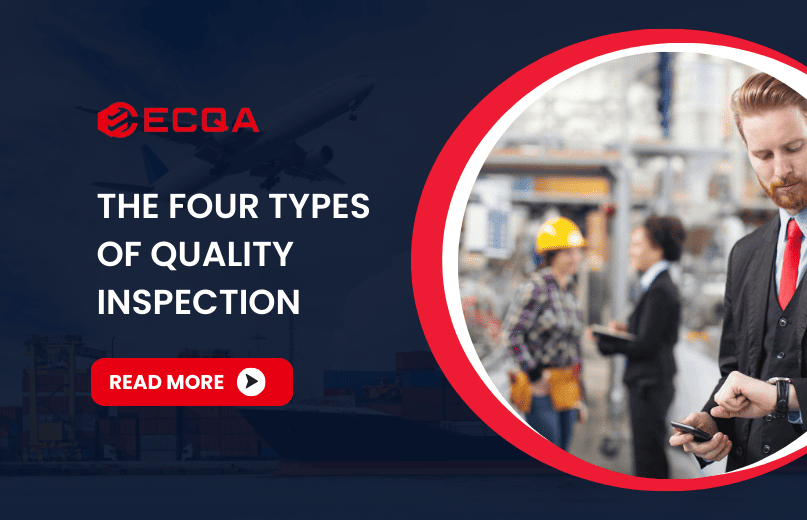
Understanding the 4 Types of Quality Inspection
Quality inspection is a structured process that ensures products meet defined standards before reaching customers. Understanding each inspection type helps manufacturers and buyers maintain consistent quality, reduce defect rates, and prevent costly shipment issues.
This guide explains the four main types of quality inspection: Pre-Production (PPI), During Production (DPI), Pre-Shipment (PSI), and Container Loading (CLI), and how they fit into your quality control strategy.

1. Pre-Production Inspection (PPI)
Purpose: To verify raw materials, components, and supplier readiness before manufacturing begins.
When to Conduct:
Before production starts or during the first manufacturing run.
What Inspectors Check:
- Quality and specifications of raw materials
- Equipment setup and production line readiness
- Supplier capability and process consistency
Example:
In textile production, PPI may involve verifying fabric color, texture, and measurement accuracy before cutting begins. Identifying these issues early prevents rework and wasted materials.
Key Benefits:
- Detects issues before production begins
- Confirms supplier reliability and material quality
- Reduces delays caused by defective raw materials
Related Service: Pre-Production Inspection
2. During Production Inspection (DPI)
Purpose: To monitor ongoing manufacturing processes and detect quality deviations in real time.
When to Conduct:
At 20–60% of production completion, depending on product type and risk level.
What Inspectors Check:
- Sampling of semi-finished goods
- Assembly accuracy and workmanship
- Labeling, functionality, and color consistency
Example:
For leather goods, DPI ensures uniform stitching, consistent material quality, and correct finishing. Early detection minimizes downstream defects.
Key Benefits:
- Identifies problems before mass production continues
- Confirms adherence to specifications
- Reduces rework and cost of defective batches
Related Service: During Production Inspection (DUPRO)
3. Pre-Shipment Inspection (PSI)
Purpose: To verify finished goods before dispatch to confirm compliance, functionality, and packaging quality.
When to Conduct:
After 100% production completion and before shipment or container sealing.
What Inspectors Check:
- Visual defects and functional testing
- Product labeling and packaging standards
- Quantity verification and carton condition
Example:
Inspectors may test a random sample under the AQL (Acceptable Quality Limit) method to ensure defect levels stay within the agreed threshold.
Key Benefits:
- Confirms shipment quality and compliance
- Prevents defective goods from leaving the factory
- Reduces customer complaints and return costs
Related Service: Pre-Shipment Inspection
4. Container Loading Inspection (CLI)
Purpose: To ensure goods are loaded correctly and securely into shipping containers.
When to Conduct:
During the loading process, before containers are sealed and released for transport.
What Inspectors Check:
- Product quantity and labeling match the order
- Carton condition, stacking method, and palletization
- Container cleanliness, seal integrity, and packaging protection
Example:
Inspectors verify that cartons are correctly distributed, with adequate padding and strapping to minimize transit damage.
Key Benefits:
- Confirms products are loaded safely
- Prevents damage and loss during transit
- Ensures proper documentation and labeling
Related Service: Container Loading Supervision
Why Quality Inspection Matters
Quality inspection safeguards your brand reputation and ensures compliance with international standards. Conducting all four inspection stages helps identify issues early, maintain supplier accountability, and ensure consistent delivery performance.
According to industry benchmarks, companies that implement full-cycle inspection can reduce defect rates by 10–20% and improve supplier reliability significantly.
Explore ECQA’s full inspection solutions:
- Pre-Production Inspection
- During Production Inspection (DUPRO)
- Pre-Shipment Inspection
- Container Loading Supervision
Frequently Asked Questions of Quality Inspection
What are the four main types of quality inspection?
They are Pre-Production Inspection (PPI), During Production Inspection (DPI), Pre-Shipment Inspection (PSI), and Container Loading Inspection (CLI).
When should a Pre-Shipment Inspection be conducted?
It should be done after production is complete but before shipment, ensuring all finished goods meet quality and packaging standards.
Why is Container Loading Inspection important?
CLI helps prevent damage during transportation by verifying that goods are securely packed and properly loaded before the container is sealed.

 Request Free Sample Report
Request Free Sample Report